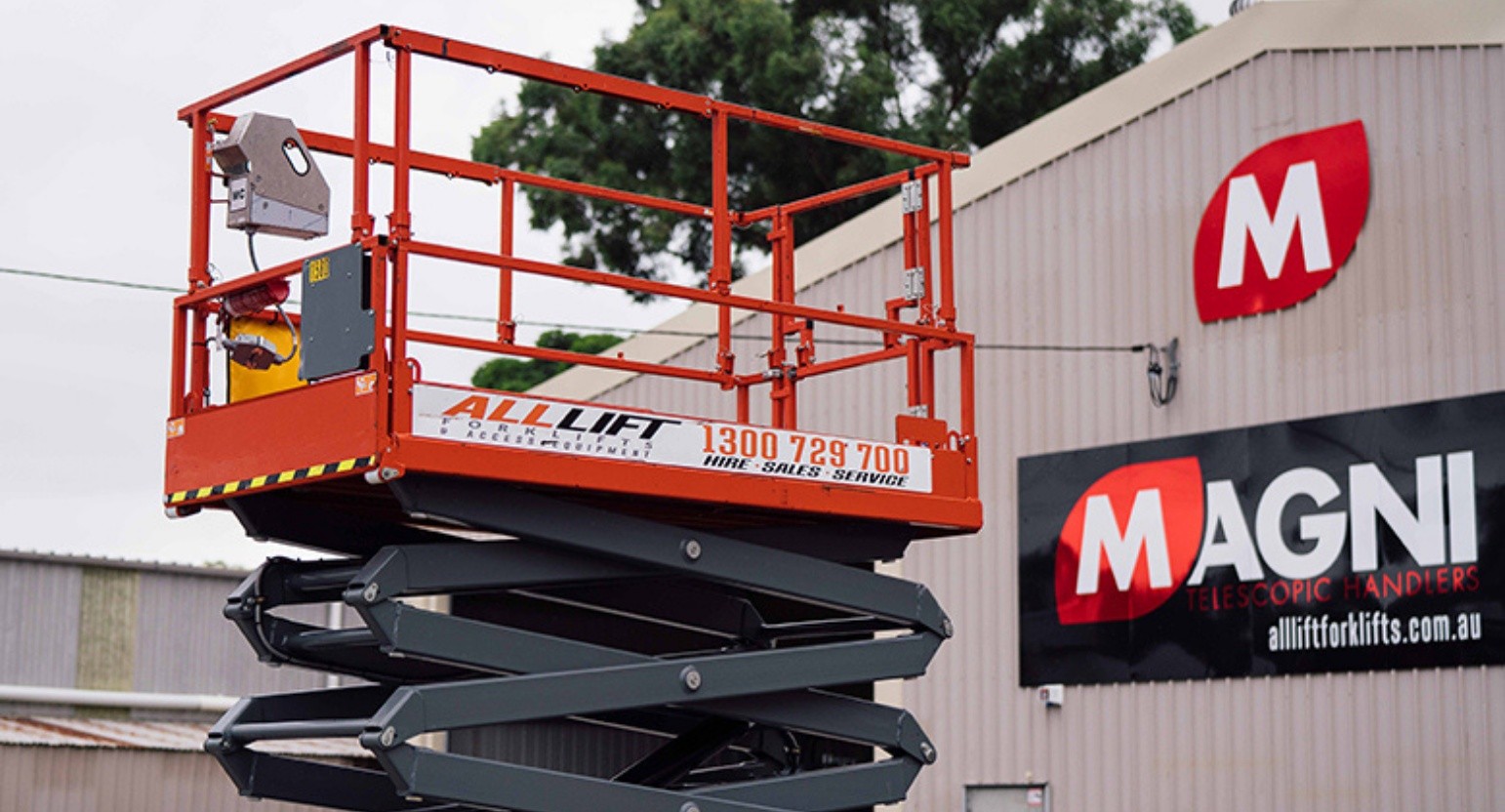How high can a scissor lift go?
Full disclosure, we get a lot of our article ideas from checking out what people are searching on Google. And really, sometimes it can be pretty funny (‘Can I race a forklift?’ is a goodie). Sometimes, though, it can be kind of surprising at first, but then when we think about it, it’s valuable information that we can take for granted. All day every day we’re eyebrow deep in all things machines, so it’s good for us to remember that there are specs about them that aren’t so common knowledge, especially if you’re fairly new to forklifts and access machines. One of those things is the height capability of scissor lifts.
So, how high can scissor lifts go?
Well, it all depends on the machine itself. Scissor lifts are really versatile though, and can typically reach anywhere from 2m to 20m. The beauty of them is that they can be safely adjusted and paused for whatever height you need, as opposed to needing to change over machines and go through handover processes just because one job is higher than the other. This is especially handy for warehouse and industrial spaces where you may need to be adjusting height requirements for stacking or equipment access fairly regularly.
This isn’t to say all scissor lifts are made to reach the full height capacities; some, like the Scissor Lift Skyjack 3215 Electric have a maximum platform height of 4.4m, while the Scissor Lift Skyjack 9350 Rough Terrain can reach 19.5m. You may require more than one scissor lift if your space is too narrow for the machine with higher lift capacity, but your shorter lift capacity can’t fulfil higher jobs.
How to safely adjust scissor lifts for maximum height reach
ALWAYS read the instructions specific to your machine and get as familiar as possible with every single safety precaution identified on it before using. You do not need a licence to use a scissor lift, but that does not mean that they should be treated without caution and respect.
Never exceed the weight limit
Just as scissor lifts have maximum heights, they also have maximum weight capacity. Unlike the height capacity, though (which is restricted by the machine’s design), a good amount of the control for weight is on the operator. The weight capacity will be clearly signalled on the machine itself, and also the manual. It is the responsibility of the operator and the onsite manager to ensure that this adhered to. Of course, too much weight will compromise the efficiency of the machine, and it may not work once exceeded, but it’s best not to rely on that. If you don’t want your scissor lift to become a serious hazard zone, even with a potential for the scissor lift to fall down, it’s best to be diligent about capacity requirements.
Always harness yourself until you are ready to completely disembark the platform
The harness saves lives. Ensure that it is clasped correctly and securely before doing any adjusting of the scissor lift height. There are clear directions in the manual on how to do this and it’s worth cross checking with every use (even if you’re a seasoned scissor lift-er).
Adjust to the height you need
This seems like a given, but it’s worth remembering that if you’re physically reaching beyond the platform and the barricade, you are in the wrong spot and at the wrong height. The purpose of the scissor lift is to help you safely reach heights you otherwise would not be able to; don’t make this point redundant (and extremely dangerous) by not securing the scissor lift in the exact right placement to achieve this. You should always be within comfortable reach of whatever you are working on.
Have more questions about hiring a scissor lift or buying a scissor lift for sale? Give our friendly team a call today - we’re always happy to help!





